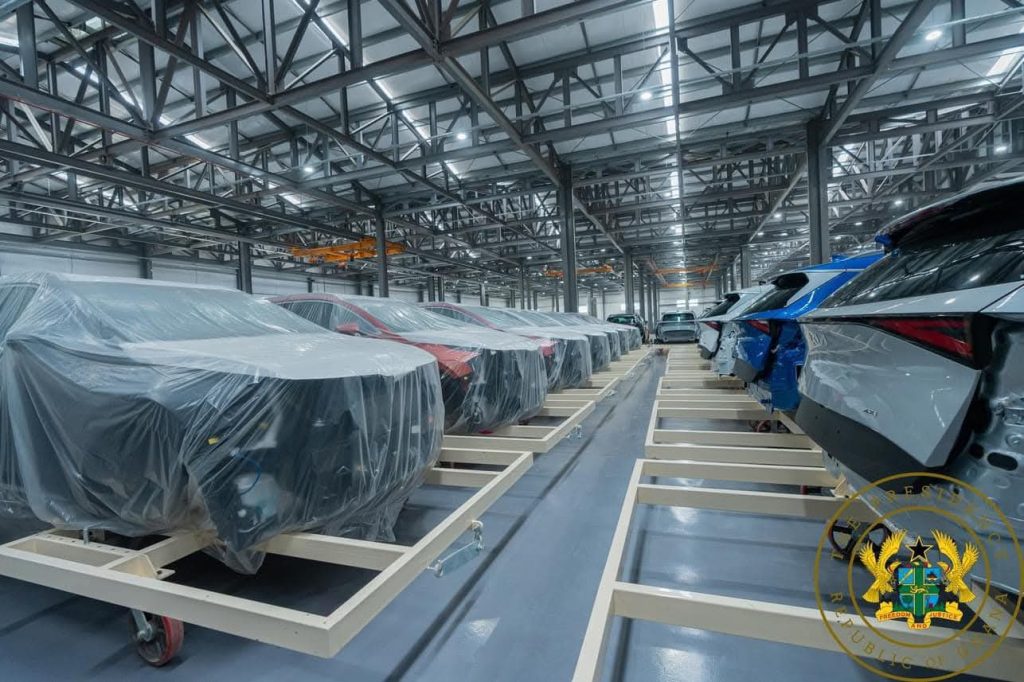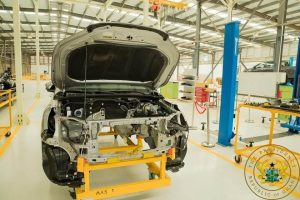4,700 new vehicles assembled in Ghana in 3 years

Ghana’s growing automotive industry has produced 4,700 new vehicles between 2020 and 2022, marking a significant step toward industrial transformation and import substitution.
This figure, though modest in raw numbers, represents 9.7% of Ghana’s new car market, with projections that local assembly could capture as much as 60% of new vehicle sales by 2027.

The data was disclosed by Mr. Jeffrey Oppong Peprah, President of the Automobile Assemblers Association of Ghana (AAAG).
Ghana’s $4.6bn auto sector
Ghana’s automotive industry was valued at $4.6 billion in 2021 and is projected to more than double to $10.64 billion by 2027, supported by a steady rise in local vehicle production and growing demand for transport solutions driven by urbanization and infrastructure expansion.
According to Mr. Peprah, the industry’s expansion reflects the effectiveness of Ghana’s Automotive Development Policy, which is positioning the country as the next industrial hub for vehicle manufacturing in Africa — after South Africa and Morocco.
“Ghana is currently leading the way in building a modern and integrated automotive ecosystem in Africa,” Mr. Peprah said. “This includes everything from vehicle and component manufacturing to finance, sales, servicing, used cars, aftermarket support, and emerging mobility technologies.”
7 Assembly plants and counting
Ghana now boasts seven operational vehicle assembly plants — Volkswagen, Toyota, Nissan, Sinotruck, Peugeot, Kantanka, and most recently, Kia, which was opened by Rana Motors.


These plants assemble semi-knocked-down (SKD) kits, contributing to local job creation, technical skills development, and technology transfer.
“The automotive policy has attracted the presence of major global players while stimulating participation by Ghanaian businesses in the automotive value chain,” Mr. Peprah noted.
“The sector is now creating not just factory jobs, but opportunities across finance, logistics, tech, and services.”
Govt policy and AAAG driving investment momentum
At the heart of the growth is the Ghana Automotive Development Policy, which aims to establish Ghana as a fully integrated and competitive industrial hub in the West African sub-region.
The policy offers fiscal and non-fiscal incentives for manufacturers and component suppliers, easing import restrictions on raw materials, and reducing the cost of production.
According to Mr. Peprah, the policy has already created a ripple effect. “Local production is expected to account for 60% of the new vehicle market by 2027,” he said, projecting a steep rise in local market share over the next two years.
“This would significantly reduce Ghana’s dependence on imported used vehicles and generate more sustainable, formal sector jobs.”
The AAAG, in collaboration with the African Association of Automotive Manufacturers (AAAM), is currently spearheading initiatives such as component manufacturing study tours across the region.

These efforts are designed to build out the supply chain for parts and attract new investment into the Ghanaian market, ensuring sustainability and regional competitiveness.
Jobs, value addition, and industrial deepening
The economic implications of this industry shift are substantial. With the value of the Ghanaian automotive industry projected to reach $10.64 billion by 2027, the country is poised to benefit from increased foreign direct investment, value addition through local assembly, and formalization of the vehicle sales and maintenance sector.
In addition to employment gains, the sector supports growth in ancillary industries such as logistics, retail, insurance, parts manufacturing, digital vehicle platforms, and banking.
According to Mr. Peprah, the creation of the Ghana Automotive Industry Development Center this year was a key milestone in institutionalizing this growth and laying the foundation for scaling component production and technical training.
Meanwhile, the broader African automotive market is forecast to expand from 1.3 million units in 2023 to 1.77 million units by 2028 — a 6.04% compound annual growth rate.
Ghana, with its policy clarity and production base, is well positioned to capture a sizeable share of that growth, not just through domestic sales but as a regional hub for exports.
From assembly to manufacturing powerhouse
While most vehicles currently assembled in Ghana are semi-knocked down (SKD) kits imported from overseas, stakeholders are optimistic that, with increased local content, the country could evolve into a full manufacturing hub in the future.
This would further enhance economic resilience, reduce the trade deficit in automobiles, and accelerate industrialization.
Mr. Peprah concluded that the summit underscored the vital role of public-private collaboration in building a future-ready automotive industry.
“We believe that the auto sector can truly become a new economic backbone for Ghana and the region,” he said. “The vision is bold, the momentum is real, and the foundation is firmly laid.”

